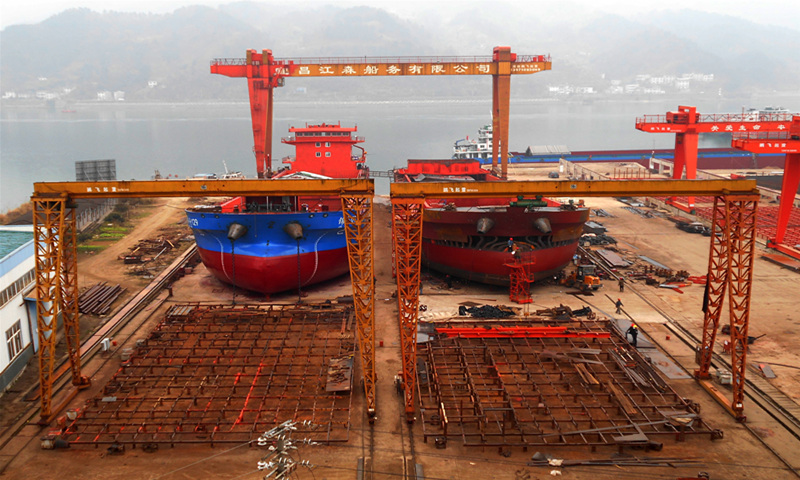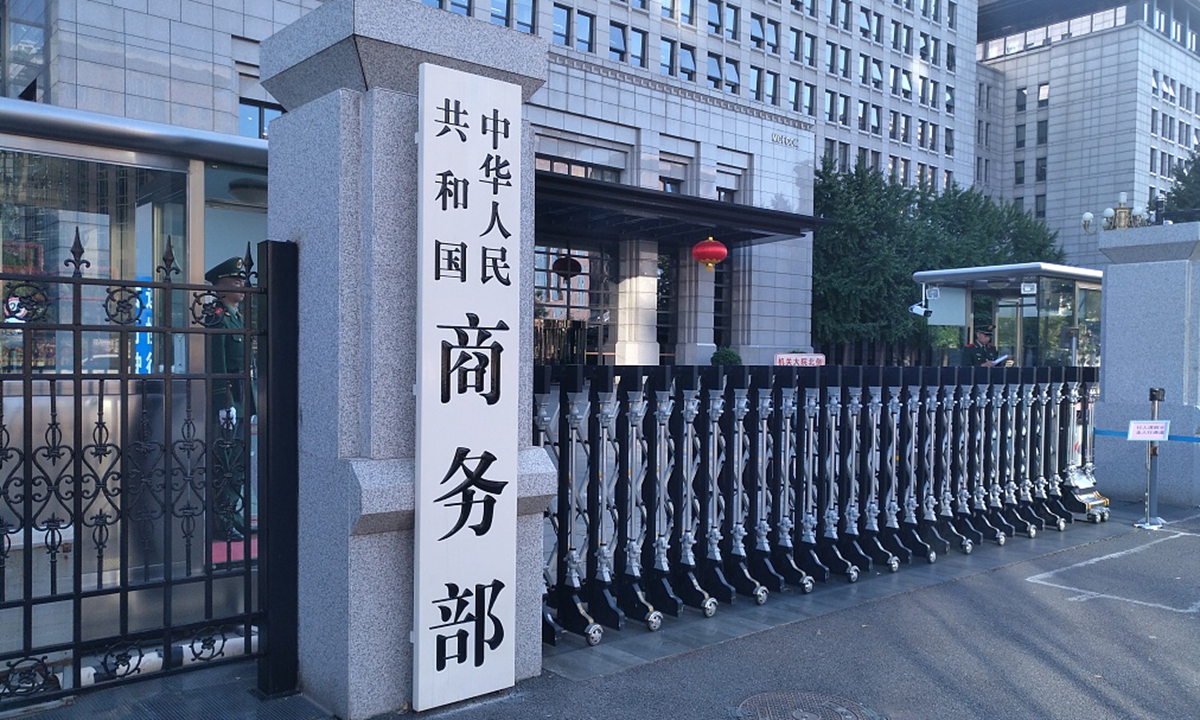Why has China's manufacturing industry become a 'scapegoat' for the US?: Global Times editorial

Workers build large cargo ships in Yichang, Central China's Hubei Province. File Photo: cnsphoto
On April 17, the Office of the US Trade Representative once again wielded the "Section 301" stick, this time targeting China's maritime, logistics and shipbuilding sectors. On the same day, the Biden administration also called for a significant increase in import tariffs on Chinese steel and aluminum products. These moves are another dangerous step by Washington dragging the US and China into an escalating trade war vortex, not only a misinterpretation or even distortion of China's manufacturing competitiveness but also a deviation from the fundamental principles of the World Trade Organization (WTO).
This is the latest Section 301 investigation launched by the US against China. Although the current scope of the investigation is somewhat different from the past, the fundamental purpose remains the same: to misinterpret normal trade and investment activities as threats to US national security and corporate interests, and to blame China for its own industrial issues. Recently, US Trade Representative Katherine Tai claimed in a hearing that China's alleged unfair policies and practices "have devastated many working communities and industries" across the US, citing industries such as steel, aluminum, and electric vehicles as examples. However, according to the White House, imports of steel from China only account for 0.6 percent of total US steel demand, far less than countries like Canada and Mexico. Not to mention, due to high tariffs, Chinese electric vehicles have hardly entered the US market, so where does the claim of "devastating" come from?
In the face of the numerous groundless accusations in the US application document, China, with frankness and integrity, naturally fears no trouble and will staunchly defend its own rights and interests. The development journey of China's manufacturing industry is evident to the world, and it can be boldly stated that the development of China's industries is the result of enterprises' technological innovation and active participation in market competition. Right and wrong have their own clear distinctions; regardless of how Washington tries to label China with various new and old accusations, it will not change the fact that the US is engaging in protectionism and unilateralism. The previous US administration's initiation of the Section 301 investigation against China and imposition of tariffs on China have been ruled by the WTO to have violated WTO rules and have faced opposition from numerous WTO members. This time will be no exception.
At this juncture, Washington's sudden concentrated attacks on China's manufacturing industry are, to some extent, influenced by the factors of the US elections. The Biden administration probably hopes to win the votes of blue-collar workers in swing states by doing so. But looking beyond the surface, behind China's manufacturing industry becoming the "scapegoat" for Washington, there is a fundamental issue - the US has yet to truly face up to the development of China's manufacturing industry and economy. If Washington cannot have a clearer understanding of "Made in China," then the future of China-US economic and trade relations will inevitably encounter obstacles and challenges.
The rise of China's manufacturing industry, especially in heavy industries such as steel, shipbuilding, and railway equipment, is a natural result of resource optimization in the process of global economic integration. The journey of China's manufacturing industry to its current state, with strong competitiveness and vitality, has not been easy. It has been achieved through overcoming obstacles, backed by a large market size, efficient infrastructure, a well-developed supply chain system, and continuously improving technological innovation capabilities. Relying on unfair means to "force growth" will not lead to the full blossoming of "Made in China." Washington should be well aware of this, as the traditional manufacturing industry in the US, represented by the shipbuilding industry, lost its competitive advantage due to excessive protectionism many years ago.
The crisis currently facing the traditional manufacturing industry in the US should serve as a wake-up call for Washington. It should be a moment for deep reflection, rather than being used as a tool for elections or as an excuse for cracking down on China. How to revitalize the declining traditional manufacturing industry in the US, and how to move economic development from virtual to real, are crucial matters concerning the national interests of the US. Choosing to blame others will only worsen the situation. Compared to unilateral investigations, the more optimal solution for Washington should be to follow the trend of globalization, adhere to the principle of comparative advantage and market economic laws, and develop industries that align with their own factor endowments, rather than attempting to help disadvantaged industries with trade protection. Doing so will ultimately be futile.
China has achieved economic leaps through continuous opening-up, and it will continue to move forward firmly on this path in the future. As the two largest economies in the world, China and the US should also work together to maintain the stability of the global industrial chain and promote global economic growth on the basis of mutual respect and equal benefits. We urge the US government to recognize the achievements of China's manufacturing industry, respect the rules and direction of globalization, and stop wielding the "Section 301" stick recklessly. This could be the first step toward a more constructive relationship.

